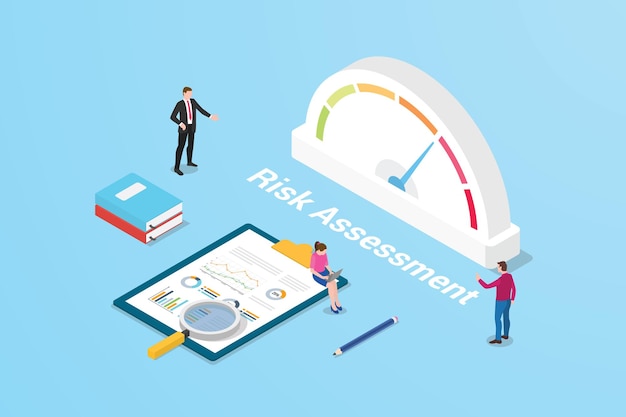How to Use What-If Analysis for Better Decision-making

Photo by storyset @ freepik
Every once in a while, a revolutionary product comes along that changes everything,
said Steve Jobs when he announced the iPhone to the world in 2007.
Nokia, the then undisputed leader in the mobile phone market, felt the ripple effects of this grand announcement. The Finnish company, renowned for its mobile phone quality, price, and features, had to sell the division to Microsoft in six years.
What could Nokia have (hypothetically) done to counter the soon-to-be-there smartphone wave?
What-if analysis!
What is what-if analysis?
What-if analysis is a financial planning and risk management tool in which CxOs/finance teams can ‘play around’ and manipulate various business levers on top of a baseline model and pose what-if question(s) to see how a certain change in a variable might impact the future and accordingly take decisions.
This process is all about asking probing questions like:
- What if we altered our pricing strategy?
- What if our customer acquisition cost doubled?
- What if we expanded into a new market segment?
- What if our main competitor released a groundbreaking feature?

Answering these kinds of questions is crucial in today's dynamic business landscape.
Different techniques of what-if analysis
Sensitivity analysis and scenario analysis are different techniques one can use to do a what-if analysis. These can be used separately or together to gauge the possible impacts of potential realities or actions one is considering.
Sensitivity analysis involves changing or ‘tweaking’ one variable at a time to see how it affects the outcome. It helps identify which factors/levers have the most significant impact on your results. Let’s say you are analysing the profitability of a new product; you might use sensitivity analysis to see how changes in price, production costs, or sales volume (one at a time) can affect your profit margin.
One can use sensitivity analysis to understand which specific factors influence the outcome most or when it is crucial to identify critical variables that require closer monitoring or management.
Scenario analysis, on the other hand, involves changing multiple variables simultaneously to model different ‘scenarios’. It helps in understanding how various factors might interact under different circumstances. For example, if you want to develop a strategy for the next financial year, you can run scenarios for increased demand, decreased demand, or the status quo.
Scenario analysis is best suited for complex, multi-faceted situations that might require the company to develop contingency plans.
The key difference is that sensitivity analysis focuses on the impact of individual variables, while scenario analysis considers the interplay of multiple variables in potential futures.
Role of what-if analysis in decision-making
Anticipate risks and be better prepared to seize opportunities
What-if analysis empowers companies to anticipate market shifts and prepare for various future scenarios. By simulating different variables—from revenue targets to customer acquisition costs—businesses can quickly adapt to changing conditions. This approach allows for comprehensive risk assessment, helping organisations prepare for both best-case and worst-case scenarios.

By exploring a range of potential outcomes, companies can better position themselves to mitigate risks and capitalise on emerging opportunities in an ever-evolving market landscape.
Optimise pricing for maximum impact
What-if analysis can help predict how different prices and pricing models might impact profit and customer satisfaction/experience, enabling better-informed decisions when considering price changes.
Strategic workforce planning and resource optimisation
What-if analysis is useful for determining ideal headcount levels and hiring plans based on growth forecasts. It can also help, say, model marketing campaigns to determine their relative ROI and manage variable costs, among other things.
Decision-making based on data-driven insights
What-if analysis helps assess opportunity costs and financial impacts of strategic business moves. It allows testing the sensitivities and potential impact of variables such as pricing, adoption rates, and market size estimates.
Steps to perform what-if analysis
Step 1. Identify the question and the key input variables
Start with a clear question you want to answer. Identify all variables that might affect the outcome.
Step 2. Choose a technique
Based on your specific needs, you can select between sensitivity analysis (changing one variable at a time) or scenario analysis (modifying multiple inputs simultaneously).
Step 3. Gather relevant data to establish your baseline
Aggregate all relevant data for the variables important to your analysis. This baseline will be used for comparison.
Step 4. Vary input values to measure the impact
Flex each value up or down to observe its impact on other metrics and quantify their effects.
Step 5. Perform a stress test
Test extreme scenarios to understand worst-case downside scenarios and tipping points where the business model breaks.
Step 6. Continuously monitor
Update your what-if analyses regularly as the business evolves. Continually pressure-test your assumptions.
How technology can make analysis easier
The right technology can greatly simplify what-if analysis, overcoming the limitations of Excel.
While Excel has been the preferred tool, it can become cumbersome and bulky for complex analyses. It is prone to errors, and it lacks real-time collaboration features. Given that what-if analysis involves various ‘model’ scenarios, maintaining an Excel file for each is hardly practical.

Purpose-built modern FP&A software offers centralised data management, automated updates, and built-in scenario modeling capabilities. These tools can handle more complex models and larger datasets, while providing advanced visualisation features.
By streamlining the process, FP&A software allows finance teams and the management to focus on interpreting results and providing strategic insights, ultimately enabling better-informed decision-making.
Leaderonomics.com is an advertisement-free website. Your continuous support and trust in us allow us to curate, deliver and upkeep the maintenance of our website. When you support us, you enable millions to continue reading for free on our website. Will you give it today? Click here to support us.
Be sure to check out the media below:
Business
Tags: Alignment & Clarity, Building Functional Competencies, Business Management, Consultant Corner
Kirk Kappelhoff is Director of Strategic Finance at Drivetrain. In addition to managing FP&A for the company, Kirk also leads solutions engineering for Drivetrain’s customers. Prior to Drivetrain, Kirk’s stints included EY and KPMG where he consulted for several Fortune 500 and B2B companies on financial modeling.





